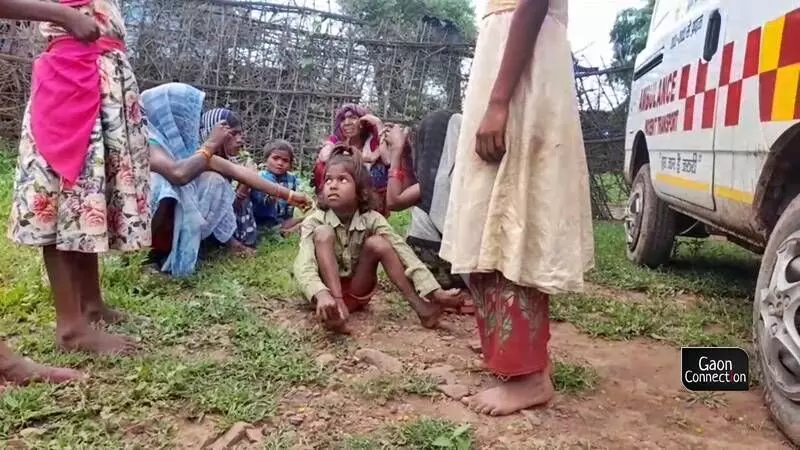Bhattan Tola (Satna), Madhya Pradesh
Rani Mawasi is inconsolable. She had watched helplessly as her nine-year-old daughter Sonhala breathed her last.
“I had left to graze the sheep after serving my daughter her meal. My husband and son had already left home earlier. When I returned home at about four in the evening, I found my daughter lying unconscious. She had diarrhoea and vomiting and by seven [7 pm], she was no more,” 45-year-old Rani Mawasi told Gaon Connection. Sonhala was her only daughter. She has two sons.
Nine-year-old girl, Sonhala, of Bhattan Tola village in Majhgawan gram panchayat in Satna district, Madhya Pradesh, was the first of five people here who lost their lives between August 11 and August 23, the youngest being a three-day-old baby.
According to Sonhala’s father, Ramdhin Mawasi, they did not have enough time to take their daughter to the hospital. Before they realised the gravity of the situation, she died. “Others in the village also lost their lives due to vomiting and diarrhoea,” Ramdhin told Gaon Connection.
Gyanvati Mawasi lost her three-day-old daughter, again to vomiting and diarrhoea. “It started in the night and I thought she had caught a chill. But her condition further deteriorated and we took her to the hospital,” the 28-year-old told Gaon Connection. But it was too late, the baby had already died, she said.
“We have two wells, but only one of them has water that is ‘potable’,” Shivpujan Mawasi, told Gaon Connection. “It is next to a pond that receives water from a nallah that flows through the forests before emptying into this water body,” the 35-year-old added.
According to Shivpujan, there are three hand pumps in the village, but all of them are dry. A few homes have a connection to drinking water taps through the Central government’s Har Ghar Jal Yojana.
Also Read: A Midsummer Pipe Dream: Pipelines laid down and taps installed, but where is the water?
As per the data of the central government’s Jal Jeevan Mission, 43.52 per cent rural households in Madhya Pradesh have tap water connection, as of August 29, 2022. In Satna district, where Bhattan Tola is located, tap water connection coverage is 19.40 per cent only.

Bhattan Tola is a predominantly tribal village with about 1,500 inhabitants. Their source of drinking water is two wells.
“There are wells, hand pumps and water supply lines, but the hand pumps don’t work and the water that runs into the well brings with it human waste matter from upstream,” Sandeep Tripathi, a social worker based in Majhgawan, told Gaon Connection. “Water pipes through the Har Ghar Jal Yojana are laid, but there is no connection nor any water coming through them,” he pointed out.
According to Tripathi, after the deaths, officials from the administration got bleaching powder put into the wells and took photographs of it.
“Even if we could not get a tap connection at home, we requested a tap connection be set up near the well. The day they were laying the pipelines, we asked them to do it, but no one listened to us,” Shankardeen Mawasi, a 60-year-old inhabitant of the village, told Gaon Connection. Even now we collect water from the well, he added.
According to Ashok Awadhiya, chief medical health officer, Satna, the deaths that occurred between August 11 and 23 at Bhattan Tola were due to various reasons. He said investigations revealed that nine-year-old Sonahla died of acute respiratory distress (ARD) syndrome, while 11-year-old Choti Bai Mawasi died of fever and dehydration; 52-year-old Ramgopal Mawasi succumbed to heart attack while the new born baby also died of ARD like Sonahla.
Seventy-five-year-old Jawaharlal, who was already admitted at the community health centre, Majhgawan, died of a cardiac arrest.


















